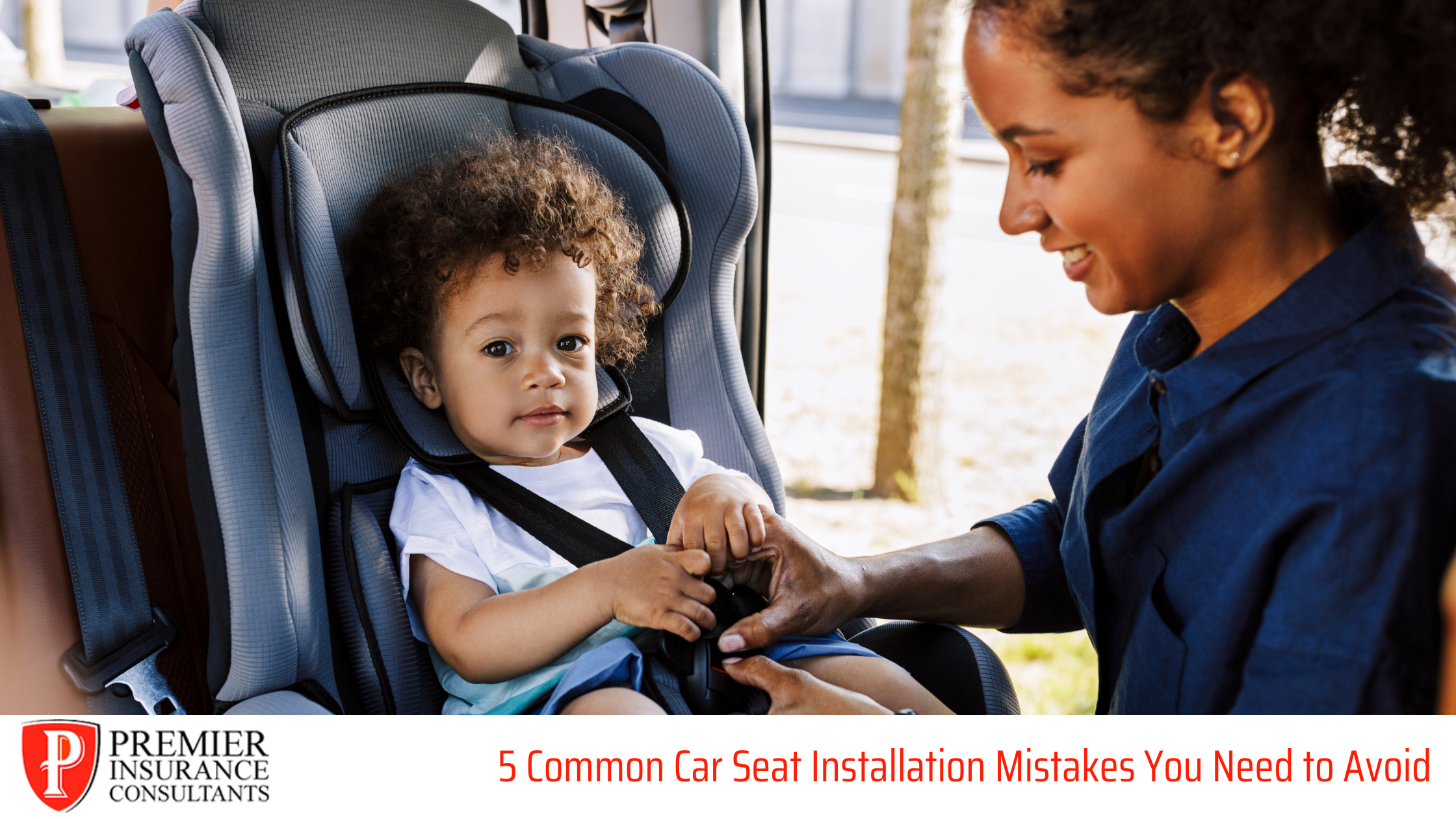Installing a car seat might seem straightforward, but statistics show that nearly half of car seats are installed incorrectly. Correct car seat installation is not just about convenience; it’s about saving lives. According to the National Highway Traffic Safety Administration (NHTSA), proper use of car seats can reduce infant fatalities in car accidents by 71%.
Understanding how to safely install and use a car seat is an essential skill for every parent or caregiver. Below, we’ll break down five of the most common mistakes made during car seat installation and offer practical tips for avoiding them. By the end of this guide, you’ll have all the know-how you need to ensure your little one is securely seated for every ride.
Mistake 1: After-Market Products
You’ve seen the ads for plush seat liners, snazzy headrests, and padded strap covers that promise added comfort. While these after-market products look appealing, they can be hazardous. Here’s why:
- Impact on Safety Testing: Most after-market products have not been crash-tested with your specific car seat model. This means they may interfere with the seat’s safety features during an accident.
- Void Warranties: Using products not approved by the car seat manufacturer might void the warranty or limit legal recourse in case of an issue.
How to Avoid This Mistake:
Stick with accessories provided or approved by the car seat’s manufacturer. If your child looks uncomfortable, consider approved alternatives like adjusting the seat’s recline or strap positions.
Mistake 2: Forgetting the Car Seat Base
Many parents unknowingly make errors when installing the car seat base, which is crucial in securing the seat properly. Two common issues include:
- Incorrect Angle: Keeping the base at the wrong angle can reduce the seat’s safety in a crash and make it uncomfortable for newborns.
- Loose Installation: The base must be tightly secured. If it moves more than an inch in any direction, it’s not installed correctly.
How to Avoid This Mistake:
- Use the angle adjuster that typically comes with the car seat base. There’s usually a level indicator (like a bubble or line) to help you ensure the angle is right.
- Follow the LATCH system (Lower Anchors and Tethers for Children) or seatbelt installation instructions in your car seat’s manual. Test the base by shaking it at the belt path to ensure it’s secure.
Mistake 3: Passing Up a Free Car Seat Safety Check
Did you know child passenger safety technicians (CPSTs) offer free car seat safety checks? Many parents skip this valuable step either because they’re unaware or think they don’t need it. But even experienced parents can miss important installation details.
CPSTs are trained to:
- Ensure the car seat is suited for your child’s age, height, and weight.
- Check if the car seat is properly installed in your specific vehicle.
- Answer any questions about transitioning between rear-facing, forward-facing, and booster seats.
How to Avoid This Mistake:
Take advantage of free car seat safety checks in your area! Use resources like the NHTSA website to find nearby inspection events or contact your local fire department. It’s 15-20 minutes of your time for priceless peace of mind.
Mistake 4: Ignoring Your Car Seat’s Expiration Date
Yes, car seats expire! Over time, plastic components can degrade, making the seat less effective during a crash. Additionally, safety standards evolve, and older models may not meet the latest regulations.
Car seats generally expire 6-10 years after their manufacture date. The expiration date can usually be found on a label on the underside of the seat.
How to Avoid This Mistake:
Always check the expiration date before using a car seat. If the label isn’t clear, refer to the manufacturer’s manual or website. When in doubt, replace the car seat.
Pro tip: Avoid using hand-me-down car seats unless you’re absolutely certain they haven’t been in a car accident and meet current safety guidelines.
Mistake 5: Hastily Buckling Your Kiddo in Their Car Seat
It’s tempting to rush when you’re juggling schedules, tantrums, and everything in between, but even small oversights when securing your child can have serious consequences. Common errors include:
- Loose Harness: Straps that are too loose won’t keep your child secure in a crash.
- Chest Clip Position: The chest clip is often positioned too low, reducing its effectiveness.
- Bulky Clothing: Puffy jackets or thick clothing can compress under the harness, increasing the risk of injury.
How to Avoid This Mistake:
- Ensure the harness is snug. You shouldn’t be able to pinch the straps at your child’s shoulders.
- Position the chest clip at armpit level.
- Dress your child in thin layers and place a blanket over them after buckling in colder weather.
Taking an extra 60 seconds to double-check the harness can make all the difference.
Drive Safely With Confidence
Your child’s safety begins with properly installing and using their car seat, and avoiding these five common mistakes is key to ensuring they are protected on every trip. Whether it’s double-checking the car seat base, attending a safety inspection, or securing the harness correctly, small steps lead to big safety outcomes.
Educating yourself is only the first step in creating a safer world for our little passengers. Help spread the word about car seat installation and safety by sharing this guide with your fellow parents and caregivers. Together, we can all ensure safer trips and brighter smiles for our children.
Disclaimer: Please note that this article is not expert advice. Limitations and conditions may apply. Please check with your local Independent Insurance Agent for details.




